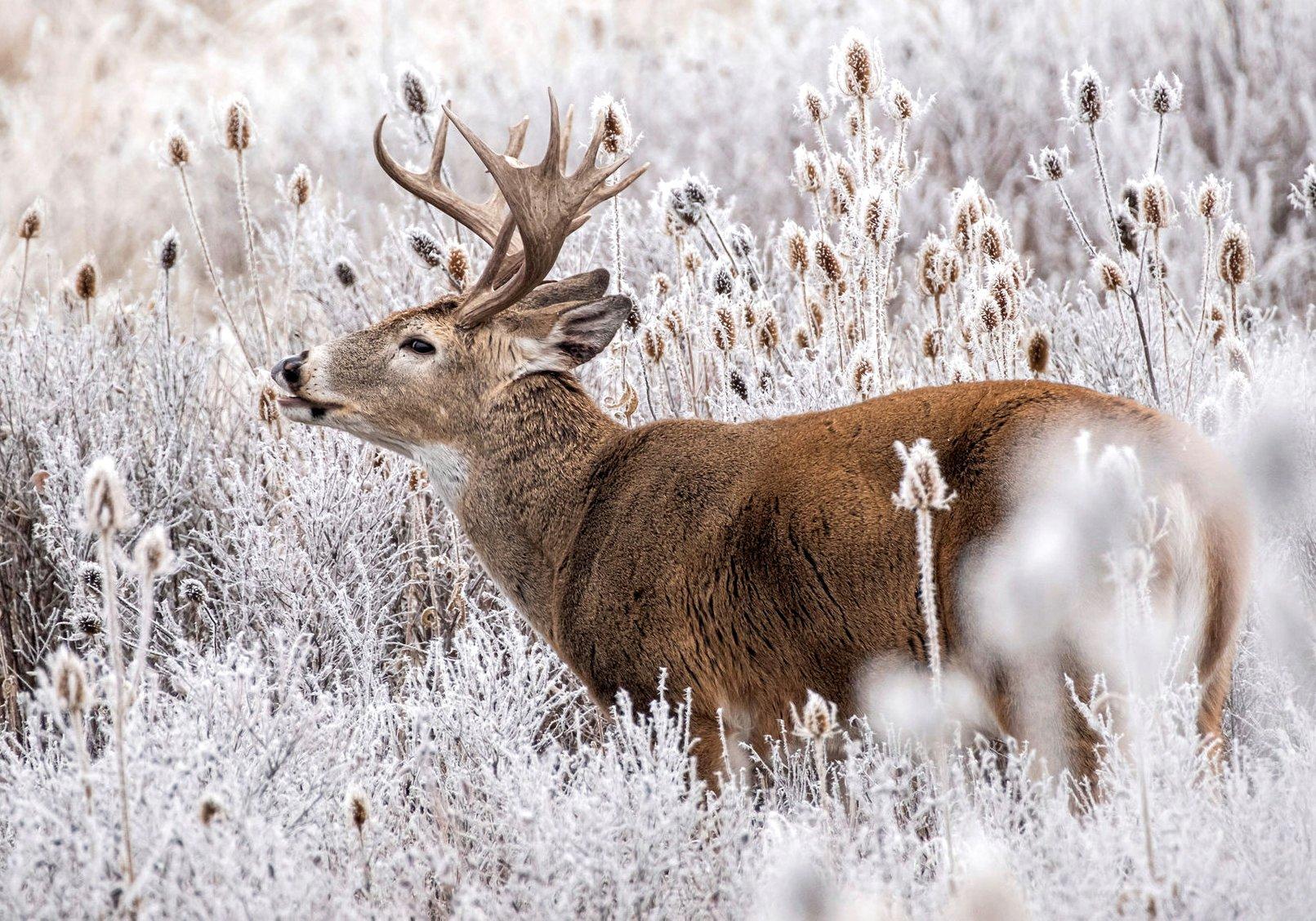Does that mean sleeping in is really the best way to tag a big buck? Don’t get your hopes too high

Deer usually move best a few hours after daylight, once the frost has burned away. But there are always exceptions to the rule. Image by John Hafner
Do you really need to wake up at 4 a.m. to be in your deer stand an hour before daylight? That’s been the standard advice for as long as I can remember. You climb in early and get settled so you’re waiting in ambush when deer start ambling back to their bedding areas from major food sources at daybreak.
It’s the perfect plan that I’ve almost never seen work. I’ve shot a lot of deer during morning hunts, including several of my biggest bucks. But most of them have been taken at least a couple of hours after sunrise. In fact, I’ve noticed and long believed that morning movement is at its best just as the sun begins burning the frost away, and for an hour or two after that. Deer not only stand up and move around, but I’ve seen plenty of them go to major food sources and feed. Major feeding behavior doesn’t all happen at night.
The Pennsylvania Deer-Forest Study seems to validate those observations. It monitored movements of 1,120 whitetails (274 bucks) through 10 years with GPS collars, and it showed that most deer are indeed bedded soon after daylight. This article in Lancaster Online summarizes many of the study’s most interesting findings, including that peak morning movement for deer was around 10 a.m.
Ten o’clock is later in the morning than I’ve seen, but the takeaway point is that if you’re climbing into the stand before daylight betting to see deer in the first few legal minutes, you might be using a flawed strategy — particularly if you’re getting bored and climbing down at, say, 9 a.m.
CONTEXT FOR MORNING MOVEMENT
Sometimes, I think deer studies like this make it easy for an outdoor writer to pen a catchy blog or record a podcast, but they don’t always help you as a hunter. Truth is, for everything you believe about deer behavior, there’s probably some study published to validate it or prove you wrong. For example, I think moon phase and weather affect whitetail movement a great deal. Some whitetail biologists I respect say they do not. I figure biologists can be wrong, too.
But here, we’re talking about morning movement, and how a study seems to validate what I’ve often noticed during my morning hunts: That deer move best soon after the sun burns away the frost. Because I don’t know all the context for that 10-year study, though, I should add context for my observations.
For starters, I seldom hunt mornings until about Halloween, after which I rarely skip a morning until my buck tag is filled. In late fall, a good bit of that morning movement is influenced by the rut and, of course, the weather (there I go again, doubting the science and saying weather matters). Deer seem to move really well on clear, frosty mornings, and especially so for a couple of hours as the sun is burning the frost away.
Up in Pennsylvania, it sounds like that happens at about 10 a.m.
That’s good to know in November, but what about the early season? The few opportunities I’ve had at mature bucks during morning hunts in September and early October have been within an hour after daybreak. I’ve killed some mid-morning does in the early season, but typically, the action is finished by 9 a.m. Perhaps there’s no study to say as much, but I know what I’ve seen. So, I like to bank my sleep during early fall because I know I’ll be behind on it come November.
BUT WAIT, THE STUDY!
Why not sleep in a bit in November, too, given what I’ve seen, what this study says about morning movement, and what I’ve just written? According to the Lancaster Online article, one of the researchers involved in the study even said, “Rifle hunters rejoice, you too can spend an extra hour or two in that nice, cozy, warm bed.”
That sounds like a great plan, but then I think about the time I was waiting in a creek bottom before daybreak, just off the edge of a Missouri hayfield. It was a few days before Thanksgiving, and I’d snuck in well before daylight and taken a seat with my back against a poplar tree, and .308 across my lap.
In the first minutes of legal light, I could just see enough to pick out a large deer slinking past me at 30 yards. When I put my scope on him, I knew I was looking at a hell of a buck. Had I slept in, or had I been a little late setting up, I’d have likely spooked that deer.
He’s on my wall instead, with a big drop-tine that reminds me to get out of bed. Maybe the deer will move best later in the morning — but not every big buck follows the latest study.
Don’t Miss: SPOOKING A BUNCH OF DEER? STOP HUNTING BEDDING AREAS AND FOOD SOURCES










